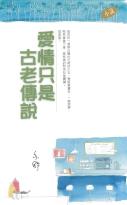
Arthur J·Riel《Object-Oriented Design Heuristics》
书刊介绍
内容简介
Product Description
Here is the first object-oriented development book to provide specific experience-based guidelines to help developers make the right design decisions. This book offers the next step for readers that know the basics of object-oriented development and now need to know if they are doing it right and making the right choices.
From the Inside Flap
In the process of teaching object-oriented analysis, design, and implementation to several thousand students, it became clear to me that the industry was in serious need of guidelines to help developers make proper decisions. Since 1987 I have scoured the literature in search of productivity and complexity metrics that can be applied at different levels of development to improve an object-oriented application. I added my own "homemade" guidelines to those found in the literature and came up with approximately 60 guidelines, several of which are tongue-in-cheek yet no less important than any others. I briefly considered calling them the "Sixty Golden Rules of OOA/D," but I recalled Dykstra's legendary "Goto Considered Harmful" paper, which branded users of goto statements heretics who should be burned at the stake in the company courtyard. That paper was important in that it provided an industry rule that stopped the users of goto statements who were destroying, wittingly or unwittingly, the maintainability of their systems. Unfortunately, the side effect of such a rule was the breeding of a group of pathological authors who, for the past 25 years, have published articles stating that the judicious use of a goto statement in some picky little piece of an application is more readable than a corresponding piece of structured code. Of course, these papers were followed up by a half-dozen rebuttal papers, which were themselves rebutted ad nauseam.
In order to prevent the same pathology from occurring, I refer to these 60 guidelines as "heuristics," or rules of thumb. They are not hard and fast rules that must be followed under penalty of heresy. Instead, they should be thought of as a series of warning bells that will ring when violated. The warning should be examined, and if warranted, a change should be enacted to remove the violation of the heuristic. It is perfectly valid to state that the heuristic does not apply in a given example for one reason or another. In fact, in many cases, two heuristics will be at odds with one another in a particular area of an object-oriented design. The developer is required to decide which heuristic plays the more important role.
This book does not invent yet another object-oriented analysis or design methodology, though the idea of creating "Riel's OOA/D Methodology" was tempting. The industry already has enough methodologies offering similar or overlapping advice, using a completely different vocabulary for common concepts. The typical problem of the object-oriented developer - which has not been seriously addressed - occurs once a design has been completed, regardless of the methodology used. The developer's main question is, "Now that I have my design, is it good, bad, or somewhere in between?" In asking an object-oriented guru, the developer is often told that a design is good when "it feels right." While this is of little use to the developer, there is a kernel of truth to such an answer. The guru runs through a subconscious list of heuristics, built up through his or her design experience, over the design. If the heuristics pass, then the design feels right, and if they do not pass, then the design does not feel right.
This book attempts to capture that subconscious list of heuristics in a concrete list backed up by real-world examples. The reader will become immediately aware that some heuristics are much stronger than others. The strength of a heuristic comes from the ramifications of violating it. The reader does not get a prioritized ordering of the heuristics. It is my feeling that in many cases the sense of priority is defined by a combination of the application domain and the user's needs and cannot be quantified here. For example, a common area of design where two heuristics might request opposite directions are those that trade complexity with flexibility. Ask yourself which attribute a software designer desires most, increased flexibility or decreased complexity, and you begin to see the problem of prioritizing heuristics.
The design heuristics are defined on a backdrop of real-world examples focusing on the area of design to which each heuristic belongs. The foundation of real-world examples provides an ideal vehicle for explaining the concepts of object-oriented technology to the novice. The end result is that this book is appropriate to the newcomer who would like a fast track to understanding the concepts of object-oriented programming without having to muddle through the proliferation of buzzwords that permeates the field. Yet, at the same time, it appeals to the experienced object-oriented developer who is looking for some good analysis and design heuristics to help in his or her development efforts.
The first chapter looks at the motivation for object-oriented programming, starting with several issues which Frederick Brooks argued in his "No Silver Bullet" paper published in 1987 (see reference 1). My perspective on object-oriented programming is that it is a natural progression or evolution from action-oriented development. As software has become more complex, we are required to remove ourselves one more level away from the machine in order to maintain the same grasp we have on the software development process. Just as structured methodologies removed one level from bottom-up programming, object-oriented technology removes one level from structured methodologies. It is not that bottom-up programming or structured methodologies are wrong and object-oriented programming is right. Bottom-up programming is perfectly valid when there exists only 4K of memory to develop, just as structured methodologies are perfectly valid when only 256K of memory exists. With the advent of increasingly cheaper and more powerful hardware, the complexity of software has skyrocketed. Developers of the early 1980s did not have to consider the complexity of graphical user interfaces and multithreaded applications; simpler menu-driven, single-threaded systems were the norm. In the very near future, no one will buy a software product unless it incorporates multimedia with moving video and voice recognition. The more complex systems require a greater level of abstraction, which the object-oriented paradigm provides. This is no revolution in software development; it is simply an evolution.
Chapter 2 discusses the concepts of class and object, the basic building blocks of object-oriented technology. They are viewed as the encapsulation of data and its related behavior in a bidirectional relationship. The notion of sending messages, defining methods, and inventing protocols are explored through real-world examples. This is the first chapter to list heuristics. Given the small subset of the object paradigm with which to work, these heuristics are fairly simple but no less useful than the more complex heuristics of subsequent chapters.
The third chapter examines the difference between an action-oriented topology and an object-oriented topology. The different topologies of these methodologies contain the kernel of truth behind object-oriented development. Action-oriented development focuses largely on a centralized control mechanism controlling a functionally decomposed set of tasks, while object-oriented development focuses on a decentralized collection of cooperating entities. I am convinced that the notion of a paradigm shift is the change in thinking required to move from a centralized to a decentralized control model. The learning curve of object-oriented development is an equally large unlearning curve for those of us reared in the world of action-oriented development. The real world in which we live is more attuned to the object model than to a centralized control mechanism. The lack of a paradigm shift manifests itself in systems that consist of a central godlike object that sits in the middle of a collection of trivial classes. These systems are built by developers stuck in the mindset of an action-oriented topology. This chapter proposes numerous heuristics for developing optimal application topologies.
Chapters 4 through 7 examine each of the five main object-oriented relationships: uses (Chapter 4); containment (Chapter 4); single inheritance (Chapter 5); multiple inheritance (Chapter 6); and association (Chapter 7) through a series of real-world examples. Most of the heuristics of interest to the object-oriented designer can be found in these chapters. The chapters on inheritance include many examples of the common misuses of the inheritance relationship. This information is vital in reducing the proliferation of classes problem, such as designing too many classes for a given application. The class proliferation problem is a major cause of failure in object-oriented development.
Chapter 8 examines the role of class-specific data and behavior, as opposed to object-specific data and behavior. The invoice class is used as an example of an abstraction that requires class-specific data and behavior. Both the SmallTalk metaclass and the C++ keyword mechanisms are illustrated. In addition, the notion of C++ metaclasses (i.e., templates) is compared and contrasted to the SmallTalk notion
相关推荐
-

阴—阳
《阴—阳》内容简介:这首作品写于1992年春。作者的主要想法是如何把中国古老文化中优秀的思想和欧洲当代的音乐写作技巧相结合,写
-

数据自助服务实践指南:数据开放与洞察提效
《数据自助服务实践指南:数据开放与洞察提效》内容简介:本书主要介绍数据洞察及其四个阶段,第1部分为自助服务数据发现,包括元数
-

Java 数据库高级编程宝典(附CD-ROM光盘一张)
Java 数据库高级编程宝典 本书特色 内容丰富、权威,详尽细致地介绍了软件开发环境的搭建方法,通过完整的网络相册和留言板实例展现了JSP+SServlet+J...
-

Cobus Strauss《Practical Electrical Network Automation and Communication Systems》
Inthepast,automationofthepowernetworkwasaveryspecializedareabutrecentlyduetodere...
-

《云计算安全与隐私》书籍《云计算安全与隐私》
《云计算安全与隐私》可以使你明白当把数据交付给云计算时你所面临的风险,以及为了保障虚拟基础设施和网络应用程序的安全可以采
-

米歇尔·麦克罗伯茨《Arduino从基础到实践》
米歇尔•麦克罗伯茨(MichaelMcRoberts)2008年在天体摄影的小项目中制作云探测器,寻找将温度传感器连接到PC的方法时发现了Ardui
-

虚拟人
《虚拟人》内容简介:人类躯体死亡,思维是否有可能继续存在,从而实现思维不朽?思维克隆人、网络人等虚拟人将如何颠覆人类对“我
-

程履绎传
《程履绎传》内容简介:雨花台烈士传丛书包括《李得钊传》《骆何民传》《许金元传》《蒋云传》《张应春传》《陈履真传》《刘重民传
-

C.NET程序设计
C.NET程序设计 本书特色 《C#.NET程序设计》:教材特色这是一本为高职高专学生量身定做的计算机类专业的项目课程教材。 任务引领本教材以任务为载体,将知识...
-

Weber 张良 大成《狂人日记》
说到网站建设,很多朋友仍然不知道网站“设计”和“制作”的概念;忽视前期策划的重要性……其实建设网站的思路比技术和内容更重
-

米田《主动的ui设计师》
本书站在一线设计师的视角,完整地展示了新媒体下的UI设计流程和细节技巧。通过主动沟通,素材的设计,草图的绘制,网页端、常用
-

华与华方法
《华与华方法》内容简介:最高的效率是不返工,最快的进步是不退步。企业经营走正道,才能少走弯路、少犯错误。18年来,华与华始终
-

《红楼梦》真相(上、下)
《《红楼梦》真相(上、下)》内容简介:“满纸荒唐言,一把辛酸泪。都云作者痴,谁解其中味?”这是《红楼梦》的第一首标题诗。曹
-
![[美] Neil Postman《Amusing Ourselves to Death》](http://oss.shudanhao.com/caiji/chazidian/2023/920.jpg)
[美] Neil Postman《Amusing Ourselves to Death》
Originallypublishedin1985,NeilPostmansgroundbreakingpolemicaboutthecorrosiveeffe...
-

《深入解析Spring MVC与Web Flow》书籍《深入解析Spring MVC与Web Flow》
《深入解析SpringMVCgnWebFlow》是SpringMVC和WebFlow两个框架的权威指南,书中包括的技巧和提示可以让你从这个灵活的框架中汲取
-

逆向管理:成为上司器重的稀缺型员工
《逆向管理:成为上司器重的稀缺型员工》内容简介:本书的开篇从逆向管理的重要性说起,现代组织的复杂,对职场人的晋升提出了更大
-

李蕙蓁|谢统胜《德意志制造》
李蕙蓁│研究所專研生態與觀光遊憩,喜愛藝術、設計、攝影,曾在望安與海龜結下不解之緣,擁有豐富的「龜」收藏。曾任報紙、雜誌
-

photoshop CS6从入门到精通(全彩版)
photoshop CS6从入门到精通(全彩版) 本书特色本书讲述了学习photoshop cs6所需的相关知识,主要包括认识photoshop cs6、使用p...
-

R的极客理想——高级开发篇
《R的极客理想——高级开发篇》内容简介:R的极客理想”系列图书以作者多年开发经验为素材,系统地梳理了R语言的知识。在《R的极客
-

用地图看懂世界格局
《用地图看懂世界格局》内容简介:美国大选、英国脱欧、俄罗斯出兵叙利亚、在韩国建立萨德反导……所有这些问题,如果只通过新闻报





